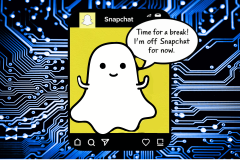Have you ever had an unsettling dream about some random person you went to high school with? Or a dream that predicted the future in some idiosyncratic way, like foreseeing a traffic jam on your way to work? Or how about some nonsense dream with random creatures and characters, with no discernable plot, unfolding as you sleep?
Dreams are part of the human experience, and one that’s baffled mystics, scientists, and everyday people alike. On the surface, dreams can be profound and confusing, and underneath, their scientific basis continues to elude dream psychologists and biologists alike.
So could dreams be a problem best solved by AI? Could we one day have a machine learning algorithm that could predict and process our dreams?
The Unique Challenges of Dreams
Dreams present a variety of unique challenges for AI researchers:
- Scientific understanding. Despite years of biologists, psychologists, and other scientific professionals working together to better understand dreams, there’s still a lot we don’t understand. Some theories contend that dreams are random static in the brain, while others describe them as a kind of simulator to prepare us for waking life, and still others see them as a way to help us consolidate and store long-term memories. Without that baseline understanding, it’s hard to develop a solution that can probe and dissect them.
- Individual variance. Not all people dream the same way. An algorithm that could predict one person’s dreams may not necessarily be able to predict another’s, depending on that person’s history, sleeping habits, and other variables.
- Motivation. It’s fascinating to reflect on your weird dreams, wondering what prompts led you to come up with that imagery, but beyond curiosity, there isn’t much motivation to learn why and how people dream. There’s no monetary or life-altering incentive, like there is in improving medical knowledge or developing consumer products. Accordingly, AI researchers have gone for more lucrative opportunities.
Still, we’re already making progress on technology that helps us better understand, predict, and control dreams.
Dream Recording
Researchers from Gallant Lab in the University of California already have an algorithm that can process brain activity to form a recognizable image. In their research, they had participants watch movie trailers, and think actively about what they were watching. Using only brain imagery, they were able to recreate vague images of the trailers they were watching. If the same technology is applied to dreams, it could enable us to witness visuals associated with a person’s dreams.
The main problem here is resolution; while researchers were able to parse certain shapes and colors, they weren’t able to reconstruct high-resolution video of a person’s thoughts. AI could help take these algorithms to the next level, though it’s uncertain whether we dream in high resolution in the first place.
Sleep Pattern Analysis
Some companies are also emerging, offering AI-based solutions that help customers understand their sleeping habits, like Sleep.ai. These consumer apps usually monitor things like snoring, teeth grinding, and tossing and turning either through wearable devices or smartphones, then provide data visuals and diagnostic tools to help consumers sleep better. If combined with some level of dream monitoring, it could be used to identify and predict future patterns.
Dream Prediction and Influence
The next logical step would be using AI first to recognize how people are dreaming, then use those data (combined with historical data) to project how a person might dream in the future. Lucid dreaming techniques already acquaint consumers with strategies they can use to master awareness of their own dreams. The problem is bridging the gap between consumer instinct and objective data analysis.
One of the biggest problems here is data availability; there are countless variables that affect how we sleep and dream, many of which are still poorly understood by scientists. While we might have the tools to collect these data, we don’t necessarily have the tools that can objectively measure their impact on dreams (i.e., recording dream visuals).
The other problem is crunching those numbers, along with consumer inputs, to generate a reasonably accurate prediction. This problem would be solvable with sufficiently advanced AI, even with our current capabilities, but it would still take time to develop.
Is It Possible?
So is it possible for us to use machine learning to understand our dreams better? Almost certainly. We’re already on the precipice of fully understanding what dreams are and how they work, and soon may be able to project people’s dreams as if they were on a film projector. Still, it’s going to take a combination of technological innovation, scientific understanding, and a collective desire to see this tech through to development—and that could mean years, if not decades before we have a functioning algorithm or device.










